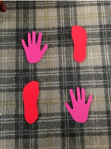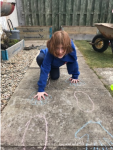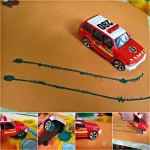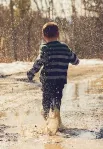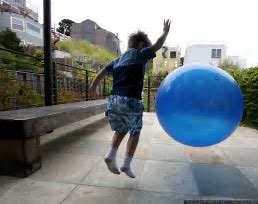Something today that you can do indoors or outside and can be done big or small depending on how much space you have to play with
If you’ve got some snowy slush or melty mud outside today, this is a great way to make it useful – or you could make some stepping stones across puddles
Making and then following tracks is a great way to build spatial awareness, and to learn the words and language connected with it.
There are lots of ways to do this – painting with cars on paper, making stepping stones outside – or just watching as a bike swooshes through a puddle

